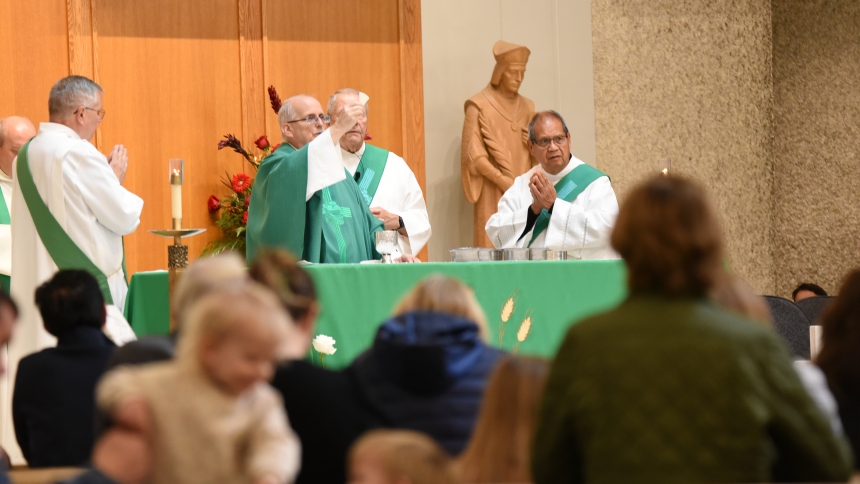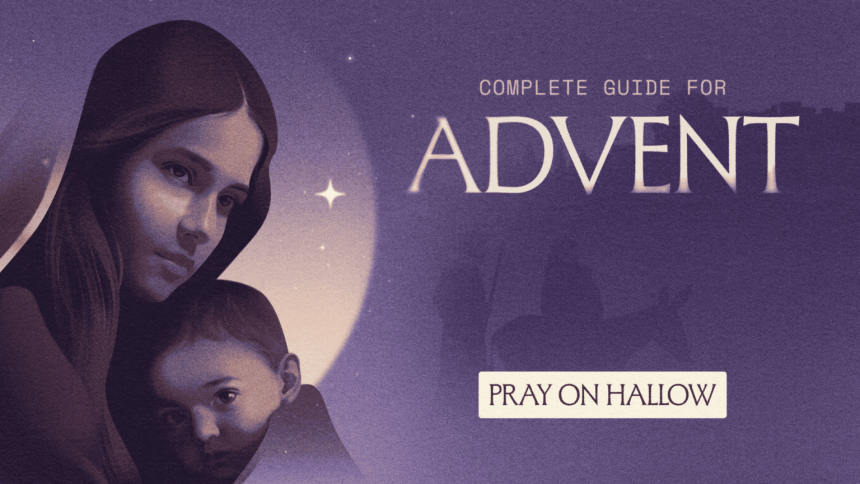
MERRILLVILLE – The word of the day was “body” for those who attended the Diocese of Gary catechetical conference March 4 at Our Lady of Consolation in Merrillville.
Monica Ashour, founder of TOBET – Theology of the Body Evangelization Team – and author of the related book series, “The Body Matters,” was the guest speaker for the Saturday event. She stressed the importance of the human body and noted that contrary to what may be common perception, “Theology of the Body” is about identity, not sex.
“How do you know you are human,” she asked. “The body. How do you know you are male or female? The body. How do you know you are hungry? The body.”
The body is a gift. Spiritually – the body is a revelation of the person. Divinely – God is revealed through the body and people are made by God in his likeness and image.
“We are made in God’s likeness and image when we love – when we give the gift of self,” Ashour said, referring to the message of St. Pope John Paull II.
In stressing the importance of the body, Ashour noted that many people today operate conversely – like “avatars” – with detachment, thinking that their bodies have no meaning and that they are their own creators.
“However, in particular, today people have to recognize that their bodies have meaning; deep, deep meaning,” she said.
Ashour shared that in the “Theology of the Body,” St. John Paul II explained the body in its creation and redemption and laid out the very meaning of life and how people are to live it based on their vocation to love through marriage or through celibacy for the kingdom of God.
Sandra Perea, a catechist from Our Lady of Guadalupe in East Chicago, appreciated the information. “If we don’t talk about this, other people will,” she said. “Our children will hear about it from the wrong people. The wrong people won’t be shy about it.”
Amy Goggin, director of religious education from St. John the Evangelist in St. John, agreed. She plans to purchase the educational series of books developed by TOBET for her religious education programs.
“We’re the ones who need to do this,” she said. “No one else is going to give them this message. We see in today’s culture that the secular world is completely opposed to God’s plans for humanity. You can see improper indoctrination of disorder in…all social media.”
Ashour also explained that “Theology of the Body” is St. John Paul II's integrated vision of the human person. The human body has a specific meaning – making visible, or concrete, an invisible reality. The body is capable of revealing answers regarding fundamental questions about us and our lives.
“Catholicism backs up the body,” Ashour said. “God’s design of the body is that it is good. If someone has a working hand, they would not chop it off. The solution is to talk about the body in its truth.”
Ashour said when it comes to gender ideology, Catholic teaching is not bigoted. “I am being loving by giving the truth in a loving way,” she said. “Pope John Paul II tells us that ‘Theology of the Body’ is the most appropriate method of teaching about the body.”
Sister Deanna, a middle school religion teacher at St. Michael in Schererville and a religious education instructor in Chicago, said she appreciates the lessons reinforcing “our communion with God” who created us in his likeness and image. “To have something accessible and supplemental to the curriculum that is something you have with this.”
“The Body Matters” is a preschool through eighth grade theology of the body program for family catechesis, catholic schools and faith formation. It includes lesson books for educators and story books. It also includes parent guides to empower parents as primary educators of their children. The parent guides include conversation starters that help foster an atmosphere of dialogue at home.
Goggin was pleased to see how truthfully and clearly the importance of the body is shared through the educational materials. “I wanted to see how you could begin teaching this at the kindergarten level; this makes sense,” she said.
St. Ann of Gary catechist Pat Deering found the information helpful. She likes the idea of involving parents, but said so many are not involved, many not even involved in their children’s lives because of death or incarceration.
Patricia Martinez of Nativity in Portage said it is important to meet the children and parents where they are at. “We focus on respecting yourself and others and having positive relationships,” she said.
Sean Martin, diocesan director of evangelization and religious education, said parishes are not required to incorporate the materials, but encourages them to consider. “All our parishes do religious education differently,” he said. “It is up to the pastors and DREs. The bishop is aware and is supportive of this.
“The content of the day, an introduction to the “Theology of the Body,” is critical to the new evangelization and addressing current cultural problems,” Martin said. “The highlight of the day was the explanation of the human person as male and female, and made in God’s image and likeness, as well as the pastoral tips on how to hand the aspect of divine revelation to those in our pews and beyond.”
To conclude her presentation, Ashour asked three questions: Where did Catholicism begin? How did it begin? What’s the center of Catholicism? The resounding answer: “The Body.”
She pointed out that “Catholicism began in the body of a woman – in the womb of the Blessed Virgin Mary. It began with the second person, or body, of the Blessed Trinity. And the center is the Body of Christ in the Eucharist – the source and summit of our faith!”


